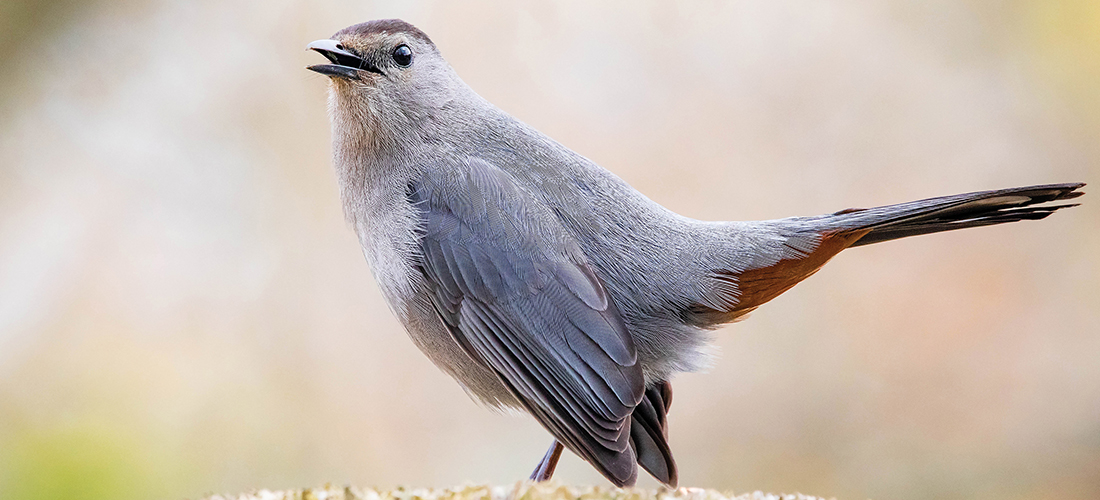
Catbird Seat
Spring return of a special bird
By Susan Campbell
Our area is home to scores of avian species during the summer months. One of which, the gray catbird, often goes unnoticed. A cousin of the northern mockingbird, it is also a mimic: a bird that learns the songs of others to advertise territory and to impress a mate. Catbirds have no melodious tune of their own — just a string of copied phrases. Nonetheless, this is a special bird, one that I anticipate each spring as the vegetation springs back to life and the days lengthen.
Although superficially resembling a blackbird given the overall dark grayish-black plumage, gray catbirds have a slender bill and a long tail. They have a velvety black cap as well as a striking rusty rump and, if you can get close enough, you will notice their deep red eyes. These are truly handsome creatures.
The bird’s name comes from the fact that, in between phrases of borrowed song, they utter a “meeew” call that is very cat-like. Some might say that their skulking habits seem very feline as well. Perhaps it is their relatively large size that requires a secretive lifestyle so as not to be grabbed by a predator. Catbirds’ bulky stick nests are a challenge to locate, usually well hidden in thick vegetation
Gray catbirds return to parks and gardens by early April. As with other long-distance migrants that spend the winter in the tropics, they journey northward on long, nighttime flights. Their destination is typically close to the spot where they themselves hatched. Once they arrive, although catbirds will instantly start to sing and display, they seem in no hurry to get down to breeding. It will be July before the first fuzzy youngsters appear. The adults remain quite aggressive throughout the season, chasing competitors such as mockingbirds, northern cardinals and American robins. They will even attack their own reflection in windows when they are nesting close to a home or vehicle.
These birds are generalists with a wide-ranging diet through the course of the year. During the summer months, they feed mainly on insects. Individuals are known to eat small lizards as well. This is yet another bird which requires an abundance of invertebrates to raise its young (typically two broods of three or four). Therefore, chemical applications, whether pesticides or herbicides, are a very real threat to the species’ breeding success. Gray catbirds will switch to eating fruit come fall as berries of all kinds become abundant. They may be attracted to feeders that offer suet or even oranges, apples or cranberries. These birds will readily consume mealworms as well.
Not all gray catbirds will return to Mexico or Central America in the winter. Some spend the colder months along the coastline of the southeastern United States. If you travel to the Outer Banks or Wilmington between October and March, do not be surprised if you hear that distinctive “meeew” emanating from thick maritime scrub. However, individuals overwintering in areas with human development are increasingly susceptible to hazards such as habitat loss, vehicle collisions and predation by cats. Distractions associated with foraging at a time of year when food is less plentiful are more likely to be fatal.
We certainly need to be aware of the threats that affect our avian friends such as gray catbirds. Too many species are struggling as a result of habitat alteration, invasive species and wide-spread chemical use. So please consider joining me: The seemingly small actions we can take in our own yards will add up to a significant improvement in the welfare of central North Carolina’s songbird populations. OH
Susan would love to receive your wildlife observations and/or photos at susan@ncaves.com.





